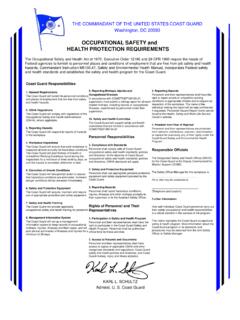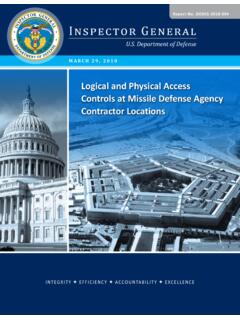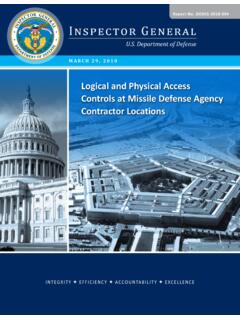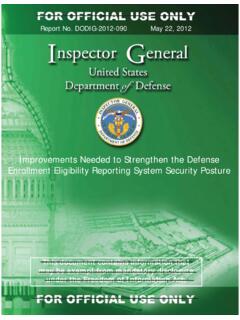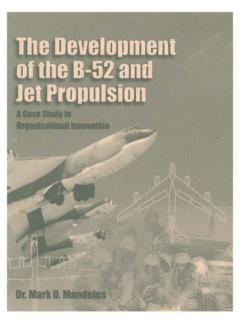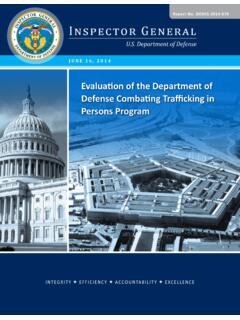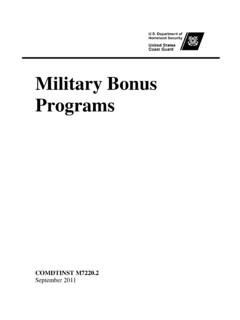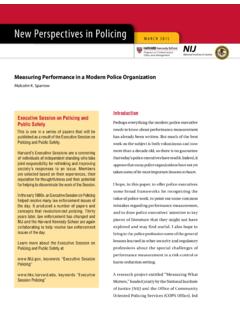Transcription of The Revolution in Drone Warfare - U.S. Department of Defense
1 50 EUROPEAN, MIDDLE EASTERN, & AFRICAN AFFAIRS FALL 2020 JEMEAA - FEATUREThe Revolution in Drone WarfareThe Lessons from the Idlib De- Escalation ZoneRidvan BaRi URcostaTurkey and Russia are learning how to operationally use a new type of twenty- first- century Warfare unmanned aerial vehicle (UAV ) Warfare . Many historical analogies can be traced to the advent of new types of weapons and resulting strategies implemented for their use in a direct, kinetic confrontation. UAVs have existed since the Cold War, but in the 1990s few coun-tries possessed first- generation UAV technologies.
2 Russia and Turkey joined the military UAV technology club relatively late, and both set a straightforward aim toward creating their own indigenous drones first for utility- based roles and then purely combat drones. Russia achieved the first aim, but Turkey soon man-aged to field its own combat Drone . However, Russia has a larger UAV beginning of 2020 nearly witnessed Russia and Turkey in direct kinetic war, initially due to a successful Syrian offensive against Turkish- backed rebel forces. This success forced Turkey to enter a war against the Syrian Army, and from 27 February until 5 March 2020, an active phase of hostilities in the Idlib Province ensued.
3 Russia and Turkey came to this confrontation well- experienced in the use of UAVs and electromagnetic spectrum (EMS) Warfare technologies, having demonstrated their proficiencies in actions taken against rebel factions in Syria and in Ankara s case against Kurdish groups in Turkey but neither Rus-sia nor Turkey, or other countries for that matter, have experience in employing these technologies in a direct clash against a peer competitor. It was truly a trans-formational confrontation that will definitely be added into military handbooks and manuals around the globe. The UAVs in this full- scale military operation were not merely an element of intelligence, surveillance and reconnaissance (ISR) but rather instruments of combat, fully integrated into the operational strategy of three countries: Syria, Russia, and Turkey.
4 In Idlib, Russia and Syria learned the hard truth of how important UAVs are in modern Warfare and duly employed significant EMS Warfare countermeasures against Turkish s Role: Defense and ObservationThe 2018 2019 UAV strikes against Khmeimim Air Base, a Syrian facility cur-rently operated by Russia, located southeast of the city of Latakia in Latakia Gov-ernorate, Syria, were the first ever attacks of this nature against a great military The Revolution in Drone WarfareEUROPEAN, MIDDLE EASTERN, & AFRICAN AFFAIRS FALL 2020 51power. However, events in Idlib Province in 2020 witnessed the case study that will inform the next chapter on Drone Warfare , both in terms of UAV use by in-surgents and UAVs being a crucial element of modern war between Khmeimim Air Base is a symbol of Russia s presence in Syria.
5 The Assad regime has signed an agreement with Moscow that will see that presence ex-tended for the next half century. It is the most secure Russian base in Syria and is actually considered as Russian land inside Syria. According to Russian sources, Khmeimim and its naval counterpart, Tartus (which has been leased to Russia in similar fashion), deployed sophisticated antidrone systems as early as 2017. These systems are equipped with modules to detect, fire, electronically suppress, and jam signals. Russia determined that UAVs presented a concrete threat only at the be-ginning of 2018.
6 On New Year s Eve, Syrian rebels conducted the first successful collective- Drone strike, employing eight UAVs in unison, and throughout January, Russian forces had to respond to intensive attacks of drones on their bases. In 2019, Russia thwarted around 60 UAV attacks at Khmeimim. Russia did not ex-pect such a move from the rebels, and only after the first attack did Russian com-manders realize how vulnerable their forces were against the such attacks. Russia lost several aircraft and soldiers during these attacks. Russia blamed the United States for the attack and for direct coordination of the Drone strikes; the Russian deputy minister of Defense stated that American Poseidon-8 coordinated the at-tacks.
7 According to military experts, Russia imposed effective radio- electronic countermeasures against the strikes. However, in the attack on 31 December 2017, the rebels drones snuck into Khmeimim when, for short period, the entire system of radio- electronic jamming was off. Usually, such measures regarding radio- electronic Defense systems are obligatory when planes take off using their navigation system. To maintain the Defense of the air base in such moments, the Russians usually put all air- Defense systems at the high alert, but it seems that air- Defense systems were not ready for such a massive Drone 5 January 2018, UAV attacks targeted Tartus and Khmeimim.
8 The rebels increased the number of drones 13 this time seven of which the Pantsir sys-tems destroyed. Russian specialists from the electronic Warfare units managed to seize control of the remaining drones. The Russians had detected the drones long before they reached the bases. Russian experts indicated that the rebels had em-ployed sophisticated strategies, , reducing the number of explosives to two and greatly reducing their speed to make the drones much harder to detect. This was when Russia learned the fact that drones employed in contemporary guerrilla war-fare can play a key role and can destroy strategic infrastructure in the enemy s entered the ranks of UAV powers independently and now uses combat drones as an important instrument in protecting Turkey s national interests 52 EUROPEAN, MIDDLE EASTERN, & AFRICAN AFFAIRS FALL 2020 Urcostathroughout the entire Middle East.
9 Sources indicate that Turkish electronic war-fare systems (EWS) allowed Turkish forces to undertake all necessary tasks dur-ing the conflict with the Syrian Army, despite Russian and Syrian government forces closure of the airspace over Idlib. According to Turkish Minister of Defense Hulusi Akar, in just one night, the army destroyed more than 200 targets, five helicopters, 23 tanks, 23 artillery pieces, and Russian- made Buk and Pantsir anti-aircraft missile systems and killed 309 Syrian soldiers. Turkish operations in Idlib involved the tactical Bayraktar TB2 and multipurpose TAI Anka medium- altitude, long- range (MALE) The massive employment of these UAVs ensured the unprecedented success of the Turkish Army, sending a message not only to Russia but also to Ankara s Western allies and more importantly, to the regional powers with whom Turkey is competing for regional hegemony that Turkey had made great leaps in this new war domain.
10 Turkish UAVs were doing what their Russian counterparts remain in capable of doing: destroying targets immediately after detecting , in Moscow some experts provided their own version of the con-flict, and of course this reflected the Russian In Idlib, Russian leaders ad-mitted, Turkey achieved some success , but it was not a strategic success and the rest of Turkey s version of the story was merely rhetoric. The air phase of the Idlib confrontation lasted around two days and was only one part of the conflict. Neither the Russians nor the Syrians expected the Turkish Army s presence in the zone.
